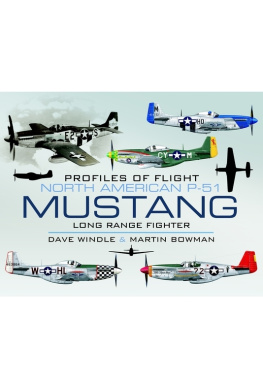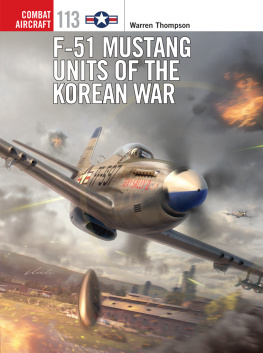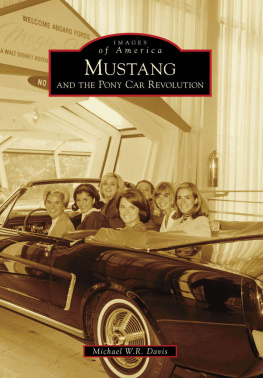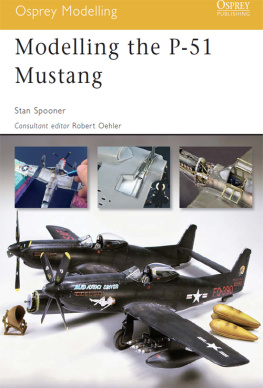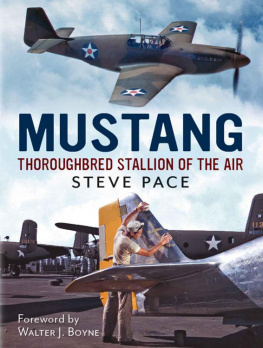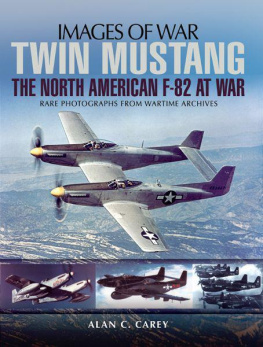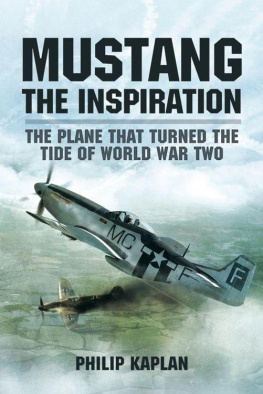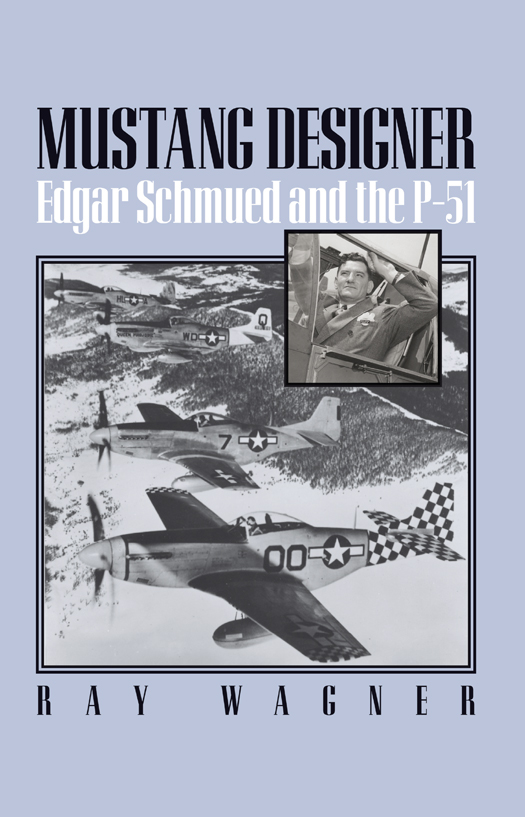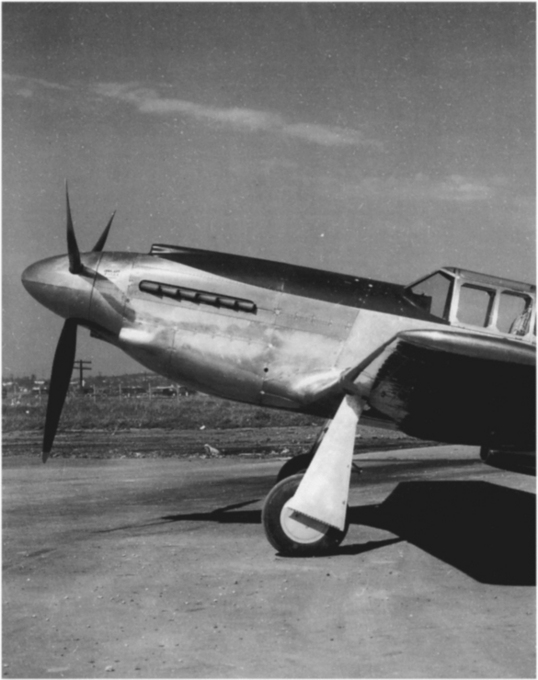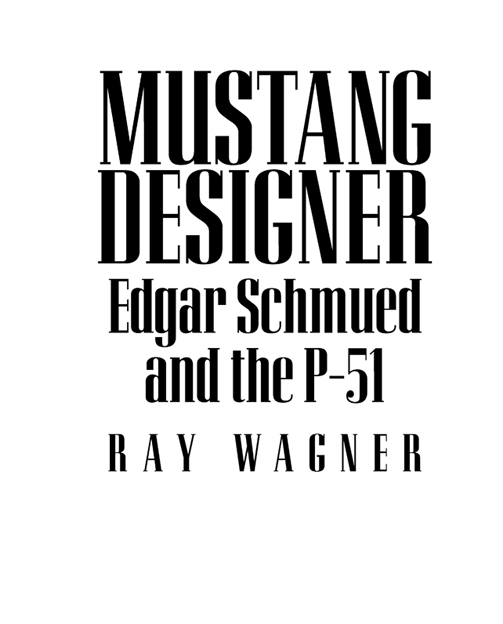
Smithsonian Books
Washington
1990 by Ray Wagner
All rights reserved
Library of Congress Cataloging-in-Publication Data
Wagner, Ray.
Mustang designer: Edgar Schmued and the P-51 / Ray Wagner.
p. cm.
Originally published: New York: Orion, 1990.
Includes bibliographical references.
ISBN 1-56098-994-7 (alk. paper)
eBook ISBN: 978-1-58834-428-1
1. Schmued, Edgar. 2. Aeronautical engineersUnited States Biography.
3. Military engineersUnited States Biography. 4. Mustang (Fighter planes). I. Title.
UG626.2.S355W34 2000
623.7464092dc21
[B] 99-42023
British Library Cataloguing-in-Publication Data available
A Smithsonian reprint of the edition published by Orion Books in 1990
For permission to reproduce illustrations appearing in this book, please correspond directly with the owners of the works, as listed in the individual captions. The Smithsonian Books does not retain reproduction rights for these illustrations individually, or maintain a file of addresses for photo sources.
This book may be purchased for education, business, or sales promotional use. For information please write: Special Markets Department, Smithsonian Books, P.O Box 37012, MRC 513, Washington, DC 20013.
www.SmithsonianBooks.com
v3.1
To Edgar Schmued
and the men who made the
fighters that protected freedom
Contents
CHAPTER ONE .
C HOOSING F IGHTER D ESIGNS , 19351939:
From P-30 to P-50
CHAPTER TWO .
T HE M AKING OF A D ESIGNER :
Ed Schmued and North American Aviation
CHAPTER THREE .
B IRTH OF THE M USTANG , 1940
CHAPTER FOUR .
T HE W AR S I MPACT ON F IGHTER P RODUCTION , 19411942
CHAPTER FIVE .
A P USH FOR P ERFORMANCE :
Merlin-powered Mustangs
CHAPTER SIX .
S TRIPPED-DOWN AND S OUPED-UP F IGHTERS
CHAPTER SEVEN .
R EACHING FOR R ANGE :
The P-82 Twin Mustang
CHAPTER EIGHT .
F ACING THE J ET A GE , 19451952
CHAPTER NINE .
N ORTHROP L AUNCHES A N EW F IGHTER
CHAPTER TEN .
A M ONUMENT OF M USTANGS
Acknowledgments
In preparing this book I have been helped by many people, and I have tried to include their names here. Special thanks are due to Mrs. Christel Schmued for suggesting this book and making her husbands papers available, to the San Diego Aerospace Museum for use of its extensive research files, to the Air Force Historical Research Center for its research grant and resources, and to Ed Schmueds coworkers, who provided much helpful information.
Christel Schmued not only was the first to suggest this book, but also obtained much information by her determination to track down each lead and win the cooperation of those who could help. Her insight, faith, and encouragement made the work an enjoyable task.
Many of Eds coworkers provided interviews, letters, pictures, and documents, beginning with a meeting chaired by Bill Wheeler at the SDAM, April 27, 1986. They are listed below, with specific citations in footnotes at the end of each chapter. Exact quotations have been used wherever possible to tell the participants story. Sole responsibility for the text and other assessments belongs to the author. Special thanks for their patient help go to Mary Wagner and to my associates at the San Diego Aerospace Museum.
Major General John R. Alison (USAF, retired)
Norman Avery
Bill R. Barker
Colonel William F. Bill Barnes (USAF, retired)
Charles Barr
General Mark E. Bradley (USAF, retired)
Ronald Bulinski
Dustin W. Carter
Dr. Ira Chart
Robert Chilton
George W. Cully
George Gehrkens
Carl J. Hansen
Alice Hofferber
Edward J. Horkey
Richard Hulse
F. J. Buddy Joffrion
Alfred F. Kustra
Jerry Landry
Sam Logan
Marc W. Malsby
Dr. Raymond S. Ross
C. F. Ruckdaschel
Richard L. Schleicher
William A. Schmitz
Dr. Richard K. Smith
Vernon A. Tauscher
Liesel Thaiss
Gordon Throne
Margaret Villepique Tyson
John W. Underwood
Deke Warner
Herbert K. Weiss
William Bill Wheeler
John W. Young
P HOTO C REDITS
The pictures in this book are held by the San Diego Aerospace Museum (SDAM) or were provided by the author and by admirers of Mr. Schmued. Wherever possible, they are credited to the organization or individual with whom the image originated. If the originator is not known, they are cited as SDAM, the present location of these prints. The major sources are:
NAA: North American Aviation, now Rockwell International. Many of these were obtained via C. F. Ruckdaschel, who spent many hours searching company files.
Smithsonian: used by permission of the Smithsonian Institution; usually manufacturers photos.
USAF: United States Air Force
IWM: Imperial War Museum
Individual contributors include Norman Avery, Peter Bowers, Ron Bulinski, Dusty Carter, Jerry Kishpaugh (via Dick Morley), Michael OLeary, and most of all, Christel Schmued (CS).
Introduction
Many stories about the design of the P-51 Mustang have been told, most of them out-and-out fabrications, or not really reflecting the actual history. This has prompted me to tell the real story as it happened, and here it is.
W ith these words, the late Edgar Schmued began what was intended to be his own account of how the P-51 Mustang, the most successful fighter of World War II, was designed and developed. Unfortunately, his death in 1985 prevented the fighter designer from completing a book for publication. But the importance of the Mustang makes its design of prime concern to those interested in aviation history.
The names of World War IIs most famous American fighter planes, such as the Lightning, Warhawk, Thunderbolt, or the best of all, the Mustang, are well known, but those of their designers have not been heard by the general public. Only years after the war did Kelly Johnson receive book-length attention, and then it was more for the postwar successes of Skunk Works, his experimental shop at Lockheed, than for his wartime P-38. Don Berlin and Robert Woods, as well as Edgar Schmued, were names best known to their fellow workers rather than to the public.
It isnt surprising, after all, that it was the fighter pilots and their generals who were at the center of the wartime stage. Yet neither the courage and skill of the pilots nor the strategies of their leaders could win, unless the engineers were able to plan weapons equal to their missions and industry was able to build the huge number of planes necessary for victory.
This is a design biography, different from other fighter books in that the story is told from the designers point of view. It uses original documentation to give a more accurate and complete account and shows the personal qualities of those who produced the airplanes. I have tried to tell here the story of American wartime fighter development, including engines and armaments, as part of a nationwide program of aircraft builders and fliers, reminding the reader of men like Don Berlin, Kelly Johnson, Alexander Kartveli, and Robert Woods, as well as the work of our central figure, Edgar Schmued.


